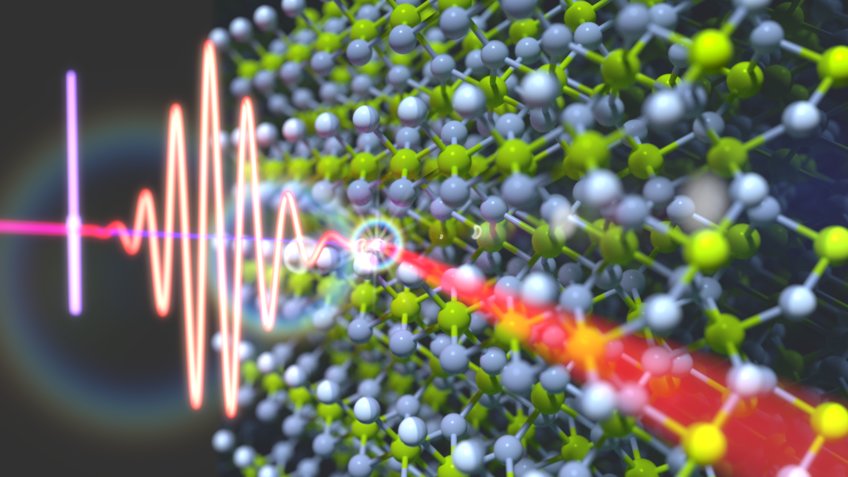Dual character of excitons in the ultrafast regime: atomic-like or solid-like?
Excitons consist of a negatively charged electron and a positively charged hole in solids. They are a so-called many-body-effect, produced by the interaction of many particles, especially when a strong light pulse hits the solid material. In the past decade, researchers have observed many-body-effects down to the unimaginably short attosecond timescale, in other words billionths of a billionth of a second.

However, scientists have still not reached a fundamental understanding of excitons and other many-body effects due to the complexity of the ultrafast electron dynamics when many particles interact. The research team from Politecnico di Milano, the University of Tsukuba and the Max Planck Institute for the Structure and Dynamics (MPSD) wanted to explore the light-induced ultrafast exciton dynamics in MgF2 single crystals by employing state-of-the-art attosecond transient reflection spectroscopy and microscopic theoretical simulations.
By combining these methods, the team discovered an entirely new property of excitons: The fact that they can simultaneously show atomic-like and solid-like characteristics. In excitons displaying an atomic character, the electrons and holes are tightly bound together by their Coulomb attraction – just like the electrons in atoms are bound by the nucleus. In excitons with a solid-like character, on the other hand, the electrons move more freely in solids, not unlike waves in the ocean.
These are significant findings, says lead author Matteo Lucchini from the Politecnico di Milano: “Understanding how excitons interact with light on these extreme time scales allows us to envision how to exploit their unique characteristics, fostering the establishment of a new class of electro-optical devices."
During their attosecond experiment, the researchers managed to observe the sub-femtosecond dynamics of excitons for the first time, with signals consisting of slow and fast components. This phenomenon was explained with advanced theoretical simulations, adds co-author Shunsuke Sato from the MPSD and the University of Tsukuba: “Our calculations clarified that the slower component of the signal originates from the atomic-like character of the exciton while the faster component originates from the solid-like character – a significant discovery, which demonstrates the co-existence of the dual characters of excitons!”
This work opens up an important new avenue for the manipulation of excitonic as well as materials’ properties by light. It represents a major step towards the deep understanding of nonequilibrium electron dynamics in matter and provides the fundamental knowledge for the development of future ultrafast optoelectronic devices, electronics, optics, spintronics, and excitonics.












